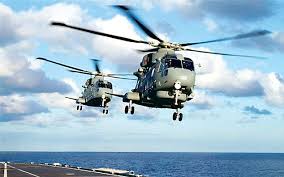
New Delhi, Feb 25: About three months after the Italian prosecutors initiated a probe into the Rs 360-crore payoff in the VVIP helicopter deal in November 2011, Augustawestland key defence agent Guido Ralph Haschke came and stayed in India for a week without raising any eyebrows of the security agencies or the Centre.
Investigative agencies are now digging the immigration records to ascertain how many times Haschke and his associate Gerosa Carlo – both allegedly swung the deal in favour of Augustawestland – flew to India. Also under the scanner are their Indian contacts apart from the ones figured in Italian probe, including the Tyagi family and lawyer Gautam Khaitan.
Haschke had landed in Delhi and stayed in a prominent hotel from February 11 to 19, 2012, to cover up the paper trail as Borgogni Lorenzo, senior employee of Finmecanica that has stakes in Agustawestland, had spilled beans to Italian investigators during his questioning on November 15, 2011. Finmecanica CEO Giuseppe Orsi was recently arrested but charges have not been pressed against him.
Sources said the details of his lodging, food expenses, telephone calls made and received and visitors to the hotel are being scanned to find out the exact purpose of Haschke’s long visit at a time when the probe was on but not exposed by the Italian media.
The February 2011 visit was, perhaps, Haschke’s last landing in India as the Swiss businessman refused to come to fix an agenda for the board meeting of Chandigarh-based Aeromatrix – in which he along with Carlo Gerosa, Arihant Jain and Gautam Khaitan were partners but resigned after the expose took place – supposed to have taken place in June, 2012.
The agencies are sifting through the available records of communication between the Italians and Indian figures of the scam to identify leads to strengthen the investigation which is at a very preliminary stage. Sources said that since the Italian investigators were chasing him, Haschke had emailed to Gautam Khaitan asking for documents relating to Aeromatrix to convince prying eyes back home that his Indian deals were not hunky dory. He was also questioned by the Italians some time late last October.
The Italian prosecution has got statements to reveal that Haschke and his partner Gerosa Carlo had dubiously managed to rig the procurement process through their defence establishment contacts and ensure that the contract for supply of 12 copters is bagged by Agustawestland, despite the fact that the machine they were offering did not suite the requirement of the Air Force.
Though an integrity pact was signed to bar middle men in the deal, the Italian military hardware manufacturer had employed, other than Haschke, English middleman Chirstian Michel.
A team of officials from the defence ministry and CBI had recently come from Italy without much vital information though the investigating agency is claiming that they have got some documents from the Italian prosecutors.






Comments
Add new comment